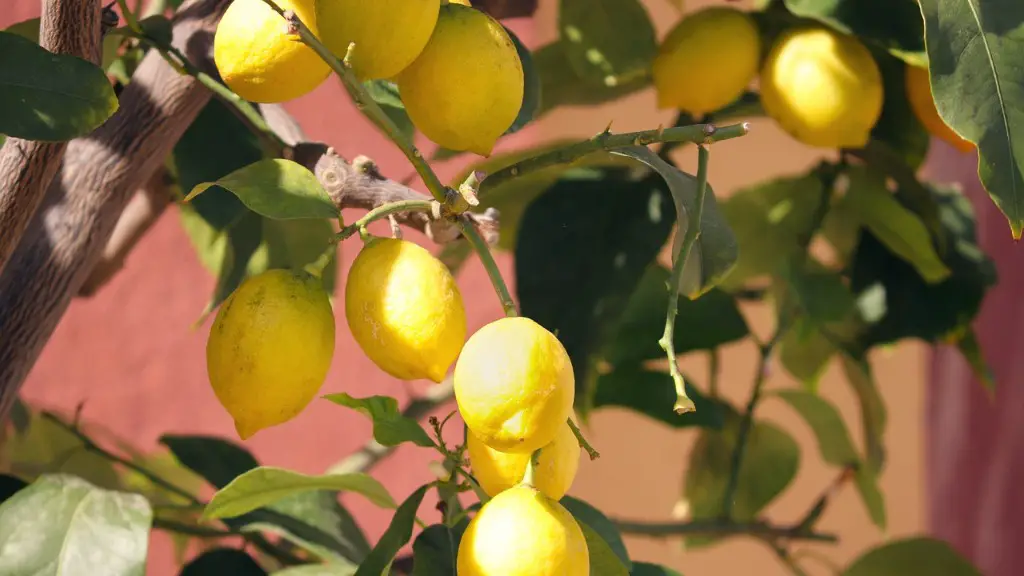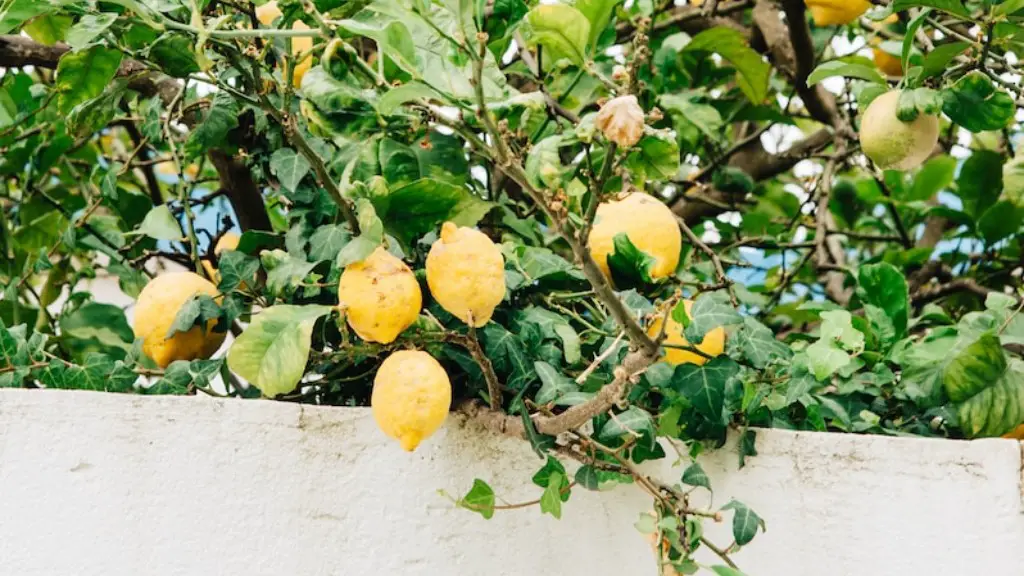Facts
Avocado trees (Persea americana) are a subtropical fruit tree with a very long lifespan. Native to Central America, Mexico and the Caribbean, it has been cultivated for thousands of years. The trees can reach heights of up to 65 feet, produce thick, evergreen leaves and can bear as many as 500 fruits in a season. Its fruits – avocados –have become a popular food worldwide for their high fat content and sweet flavor. The size of an avocado tree can vary depending on region, climate and the specific cultivar, but the average tree will be around 30 feet tall and wide.
Growing Conditions
Avocado trees need warmth, sun and well-drained soil in order to thrive. In addition to providing plenty of sunlight, they should be kept in cooler areas to prevent over-bearing and sunburn. These trees are generally resistant to insects, so they don’t need to be treated with pesticides, unlike many other fruit crops. However, they do require regular watering, especially during the warm, dry summer months. Proper care and nutrition can help promote healthy growth and a larger, more productive tree.
Harvesting and Pruning
Avocado trees typically bear fruit from their third year onward, but smaller fruit may be produced before that. The tree should be pruned in the spring, with weak or dead branches removed to ensure healthier, more productive growth. Regularly removing dry, aged leaves from beneath the canopy of the tree can also boost production.
Fruit Production
Avocado trees produce a distinct type of flower, either male or female, so it is important to look for trees that produce both. Each avocado seed contains an embryo that grows into a tree, meaning the best way to get a good fruit production is to grow several trees together. A mature tree can produce hundreds of fruits, but a tree that is still in its early stages may not produce more than ten.
Varieties of Avocado
There are various varieties of avocado trees, each with its own characteristics. Some of the most popular cultivars include the Hass, Fuerte, Bacon and Zutano. The Hass is the most common cultivar and produces a large, round fruit with a creamy texture. The Fuerte cultivar yields a larger, pear-shaped fruit with a firmer texture, while the Zutano is the smallest of the bunch, producing a thin-skinned fruit with a mild flavor.
Climate and Pests
Avocado trees require warm, humid climates for optimal growth, so cold winters can be detrimental. The trees are relatively pest-free, however, common issues can arise if the tree is stressed from an overly dry, hot climate or from over-fertilizing. Some pests such as scale and mealybugs also enjoy Avocado trees, so they should be kept an eye on.
Soil Requirements
Avocado trees enjoy soil that is well-drained and has a pH between 6 and 7. For optimal growth, the roots should have access to plenty of oxygen and the soil should not be too wet or too dry. Compost and fertilizer are essential for providing additional essential nutrients and minerals.
Irrigation
Watering is a crucial factor in the growth of an avocado tree, and should be done on a regular basis. The tree should be watered deeply twice a week, and significantly less during the cold winter months. Water should be applied evenly in a wide radius away from the tree, so that the roots get an adequate amount of moisture.
Maintenance
Avocado trees require regular maintenance to promote healthy growth and an abundant harvest. Regular pruning, fertilizing, and mulching are essential in order to promote the health of the tree and its fruit production. Fertilization should be done during the spring, usually with a nitrogen-rich fertilizer. Also, it is important to remove any weak or dead branches during the pruning process to ensure healthy, strong and productive growth.
Mulching
Mulching is a great way to provide additional nourishment for an avocado tree. Organic mulch, such as bark chips, can help prevent weeds, slow evaporation and add valuable nutrients to the soil. During the summer months, a light layer of mulch can protect the roots of the avocado tree from the heat, and enhance its overall health.
Fruit Quality
The quality of the fruit produced by an avocado tree can often depend on its growing environment, nutrition, and overall care. Healthy trees usually have abundant foliage and healthy root systems, and should produce exceptionally tasty fruits. To ensure a good crop, careful attention should be paid to the tree’s fertilization and water needs.
Disease and Pests
A number of diseases can affect an avocado tree, usually due to nutrient deficiencies or improper irrigation. Common issues include leaf spot, root rot and anthracnose. In addition to diseases, avocado trees can be subject to attack from various pests, including mealybugs, scales, whiteflies and borers. To protect trees from pests and diseases, it is important to provide adequate nutrition and keep the area around the tree free from weeds and debris.
Harvesting Timing
Harvesting an avocado tree is not an exact science, and timing can depend on many factors, such as the climate and the specific cultivar. Generally, the fruit should be picked from the tree when it is still slightly hard and green, as it can take a few weeks to ripen fully. To ensure the best flavor and texture always harvest before the fruit is fully ripe.
Proper Storage
Avocados should be stored at room temperature and away from direct sunlight. Be sure to check the avocados regularly as they can over-ripen quickly. To prevent over-ripening, cut the avocados open and store in the refrigerator. Additionally, they should be wrapped in plastic wrap or sealed in an air-tight container to keep the fruit from drying out.


